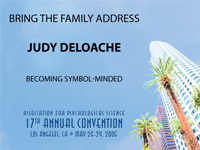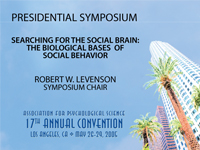Can You Feel the Identity Shift?
A few years ago, Claude Steele felt discriminated against in a way he will not soon forget. Having traveled to Silicon Valley to meet a friend working at a start-up firm, Steele, coaxed inside, shook hands with the president — all 26 years worth of him — and the other, younger employees, many of whom had hung bicycles on hooks above their cubicles, as a mobile might hover above a nursery crib. Around him swarmed a soundtrack of unfamiliar melodies. “And I’m hip,” he said. “I know music.”
Steele’s age, the same identity that had meant nothing to him the first part of that day, suddenly smoldered to the surface of his psyche, altering his view of the world. “I feel instantly old,” he recalled thinking. “If I were actually trying to get employment in that situation, this would be a preoccupying identity.”
The identity of age itself was not the cause of Steele’s feelings of alienation, he argued; rather, the environmental contingencies that activated age as his predominant identity over all his other possible identities — African American, bespectacled, Stanford University psychologist — lay at the heart of his Psi Chi Address, “Identity Contingency Threat: It’s Role in Our Lives.”
“The meaning a social identity has for us is rooted in particular circumstances — things that happen to us and that we have to contend with because we have a given identity,” Steele said. “Contingencies that threaten are especially important. Those that make us feel that we may be at a disadvantage in a situation because we have a given identity. Then the implicated identity comes alive in a very powerful way.”
In one of his experiments, these contingencies activated white males’ identities in a way not only powerful but disturbing. White male participants were told they would be in a conversation with two other male students. Photographs of the absent pair, either two whites or two blacks, were shown to the participants, who then drew one of two topics of conversation — love and relationships or racial profiling. At this point, the experimenters left the room with the farewell instruction that the participants could arrange the three chairs set aside for the discussion however they pleased.
When the topic of conversation was racial profiling and the fellow discussants were black, participants placed the chairs noticeably farther apart, a behavioral phenomenon Steele attributes not to prejudice but to identity contingencies. In fact, pretest measurements confirmed that the least prejudiced participants chose the greatest spatial separation — the direct result of an identity contingency that, in this somewhat socially reversed situation, made it difficult to be white.
“To somebody who is especially low in prejudice, the prospect of being seen that way is really upsetting,” Steele said. “They’re thinking: ‘If I’m in a conversation with these guys and I make a mistake, I could be seen in a way that I don’t want to be seen.’ Part of the challenge of having a diverse society may be these identity contingencies that we hold for each other, as much as prejudice in a direct way.”
The situational cues elicit a particular identity change from person to person — even within an individual. Male and female bathroom symbols, for example, are generally neutral cues. However, a bathroom can be a negative cue, as it is in Stanford’s math department, where a woman has to go down two sets of stairs and across half the building to find the lavatory. Being a Mormon in Salt Lake City, Utah is such a positive cue that it’s almost transparent — unless you are not a Mormon, in which case feelings of isolation and difference can be intense.
Sometimes that intensity manifests itself physically. In another experiment, female participants interested in a summer math conference watched two informational videos: One video was gender-balanced; the other showed only one woman surrounded by men. When the participants watched the unbalanced video, their blood pressure rose, exhibiting what Steele called “a huge cardiovascular reactivity.” They also become hyper-vigilant, and able to recall more details about the video on a memory test.
To Steele, understanding the interplay between environment and identity is the first step towards a solution. “Many diverse settings inherently contain cues that will make certain people feel uncomfortable,” he said. There may not be much that can be done about it, he admitted. After all, it would be pretty tough to pass legislation banning the hanging of bicycles above cubicles. But a heightened awareness of bad cues might help social psychologists predict potentially threatening situations, which they could inject with enough positive cues to make people feel secure. “We have to develop techniques for making these settings safe,” he said. And he’s not talking about bike helmets.




APS regularly opens certain online articles for discussion on our website. Effective February 2021, you must be a logged-in APS member to post comments. By posting a comment, you agree to our Community Guidelines and the display of your profile information, including your name and affiliation. Any opinions, findings, conclusions, or recommendations present in article comments are those of the writers and do not necessarily reflect the views of APS or the article’s author. For more information, please see our Community Guidelines.
Please login with your APS account to comment.